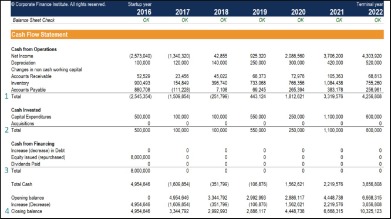test
2024/08/07
Bookkeeping basics: A guide for small businesses
キーワード:未分類

Accounting software can streamline your bookkeeping process and make your financial management more efficient. It’s useful for business owners looking to save time current ratio and working capital and avoid common accounting errors. Bookkeepers record and classify financial transactions, such as sales and expenses.
That’s because the single-entry bookkeeping is a lot more simple and straightforward than the double-entry one. There are two types of cash flow reports, direct and indirect cash flow reporting. Then you have to compile all of that data into something more useful that can actually help your business make strategic decisions. Recording data correctly is just the first step in doing accounting for your small business. The table below summarizes most of the accounts (and their types) that you might need to use while doing accounting for your small business. You can find the 8 most common accounts that any small business will have to use for their accounting highlighted in blue.

Open a Small Business Bank Account
The Ascent, a Motley Fool service, does not cover all offers on the market. Once you have this information in place, find a good payroll service provider, and get ready to hire your first employee. Accounting software applications always include a default chart of accounts that you can use residual claim to assets definition immediately.
- A bigger choice is to create financial projections, then base your investments and use of resources like retained earnings off of those goals.
- With these basic accounting tips for small-business owners under your belt, we’re sure you have the tools you need for small-business success.
- QuickBooks Online users can choose QuickBooks Live Bookkeeping to get year-round access to verified experts who are focused on their success.
- To set up a budget, gather your financial data, such as income statements, balance sheets, and cash flow statements.
- You must use a double-entry accounting system and record two entries for every transaction.
If vendors offer discounts for early payments, you may want to take advantage to reduce costs. Without them, it’s nearly impossible to make informed decisions about your business’s financial health. Generally, if your assets are greater than your liabilities, your business is financially stable. Note that certain companies, such as those in service-based industries, may not have a lot of equity or may have negative equity. You’ll need to handle payroll withholdings and then report and deposit the payroll taxes, like Social Security, to the appropriate agencies on the required dates.
Step 7: Set up payroll
Below, you’ll find some frequently asked questions that small business owners have when it comes to accounting. Luckily, you can use online software like Deskera to automate tax calculation for payroll and manage all of your payroll payments through an easy-to-use visual dashboard. The main difference between the two is that single-entry bookkeeping only requires writing down a single entry for each business transaction you perform. For starters, it will be a lot simpler for you to keep track of how well your business is doing. And you’ll also save yourself a ton of time and nerves for when the time to file taxes comes. The first step after you’ve incorporated your business should be to open a business bank account.
Financial statements can yield valuable insights into how well your small business manages its income and expenses. You’ll also need to present up-to-date financial statements to lenders if you plan to apply for small business financing at some point. Another outcome of bookkeeping is being able to perform a monthly bank reconciliation. This is the process of making sure that everything you’ve 9 common business expense mistakes u s freelancers make recorded in your records as cash in a given month matches your bank statement, and that the total is the same.
Accounts payable
This could be anything from your registration documents, to license, business name, and more. LLCs, partnerships, and corporations are legally required to have a separate bank account for business. On the contrary, sole proprietors are not, but it’s definitely recommended. Accounting software ranges in price from free to hundreds of dollars a month. And generally, no matter the plan or price, accounting software is more reliable than by-hand spreadsheet accounting. You can learn a lot about how to do accounting for small businesses just from browsing the internet.
This is irrespective of whether you received or paid cash for the product or service. You must use a double-entry accounting system and record two entries for every transaction. Once you have a business bank account in place, it’s time to connect it to accounting software. Most reputable accounting software can streamline the accounting process by connecting to your bank account to ensure your financial statements reflect every transaction. Using a comprehensive bookkeeping software program often becomes easier over time.

